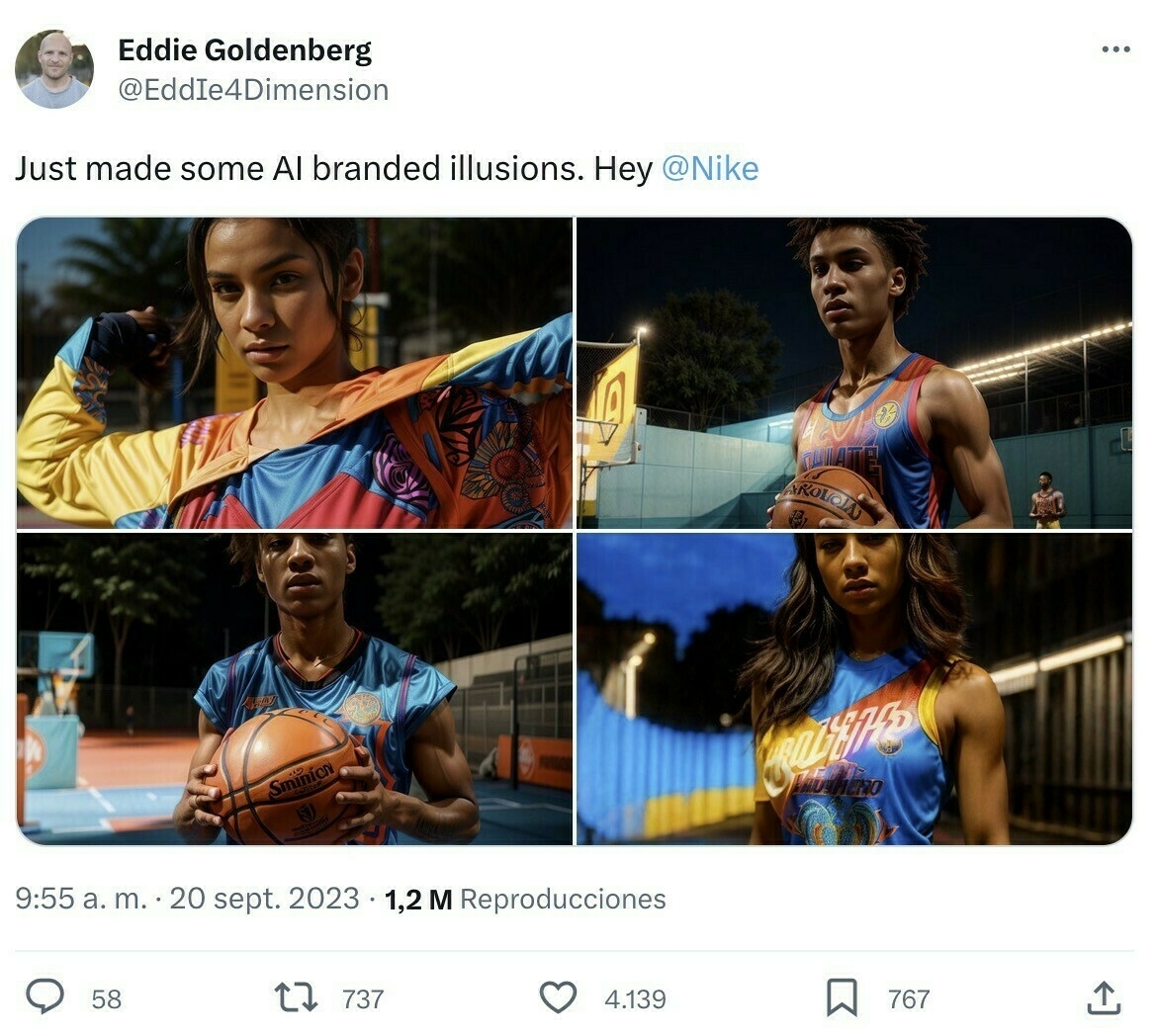Climate havens
I grew up in an ex-mining town, surrounded by ex-mining villages. At one point in my teenage years, I can distinctly remember wondering why people continued to live in such places once the reason for its existence had gone?
Now I’m an adult, of course I realise the many and varied economic, social, and emotional reasons. But still, the question remains: why do people live in places that don’t support a flourishing life?
One of the reasons that politicians are turning up the anti-immigration at the moment is because they’re well-aware of the stress that our planet is under. As this article points out, even if we reach net zero by 2050, the amount of carbon in the atmosphere means that some places are going to be uninhabitable.
That’s going to lead not only to international migration, but internal migration. We need to be preparing for that, not just logistically, but in terms of winning hearts and minds.

In 2022, climate change and climate-related disasters led nearly 33 million people to flee their homes and accounted for over half of all new numbers of people displaced within their countries, according to data from the United Nations’ High Commissioner for Refugees and the Internal Displacement Monitoring Centre. This amount will surely increase over the next few decades.Source: The U.S. Government Should Push People To Move To Climate Havens | NoemaOutside the United States and Canada, the World Bank predicts that climate change will compel as many as 216 million people to move elsewhere in their countries by 2050; other reports suggest that more than one billion people will become refugees because of the impacts of a warming planet on developing countries, which may exacerbate or even precipitate civil wars and interstate armed conflict.
[…]
The extraordinary pressure that continued international and domestic climate migration will impose upon state resources and social goods like schools, hospitals and housing is difficult to fathom. Over the past year, city and state governments in the U.S. have feuded over the distribution of migrants stemming from the Southern border, with New York Mayor Eric Adams declaring that the current migration wave will “destroy” the city.
[…]
The stark fact is that the amount of carbon dioxide already amassed in the atmosphere all but assures that certain zones will become uninhabitable by the end of the century, regardless of whether global greenhouse gas emissions reach net zero by 2050. If factories cannot operate at full capacity due to life-threatening climate conditions, periodic grid failures and difficult-to-replace labor shortages over the next two decades — and these challenges reverberate throughout their surrounding economies — the output of the renewables sector will falter and stall projects to decarbonize businesses, government agencies and households.
In the long run, people can only treat you the way you let them
This blog post, which I discovered via Hacker News, is about ultimatums around ‘return to office’ mandates/ultimatums. But it’s also a primer to only allow people to treat you the way you want to be treated.
People who abuse any power they have over you aren’t worth respecting and definitely aren’t worth hanging around. Although sometimes it’s difficult to realise it, the chances are that you’re bringing the talent to the table, which is why they acting in a way fueled by insecurity.

If I had to give only one bit of advice to anyone ever faced with an ultimatum from someone with power over them (be it an employer or abusive romantic partner), it would be:Source: Return to Office Is Bullshit And Everyone Knows It | Dhole MomentsUltimately, never choose the one giving you an ultimatum.
If your employer tells you, “Move to an expensive city or resign,” your best move will be, in the end, to quit. Notice that I said, ‘in the end’.
It’s perfectly okay to pretend to comply to buy time while you line up a new gig somewhere else.
That’s what I did. Just don’t start selling your family home or looking at real estate listings, and definitely don’t accept any relocation assistance (since you’ll have to return it when you split).
Conversely, if you let these assholes exert their power over you, you dehumanize yourself in submission.
More on the vagus nerve (and exercise)
I mentioned a few weeks ago how researchers have been trying to electrically stimulate the vagus nerve, which is now thought to help treat everything from anxiety to depression.
In this study, researchers from the University of Auckland found that the vagus nerve, plays a significant role during exercise. Contrary to the prevailing understanding that only the ‘fight or flight’ nervous system is active during exercise, this study shows that activity in the vagus nerve actually increases. This helps the heart pump blood more effectively, supporting the body’s increased oxygen needs during exercise.
Interestingly, especially for people I know who have heart failure, they also identified that the vagus nerve releases a peptide which helps dilate coronary vessels. This allows more blood to flow through the heart.

The vagus nerve, known for its role in 'resting and digesting,' has now been found to have an important role in exercise, helping the heart pump blood, which delivers oxygen around the body.Source: Vagus nerve active during exercise, research finds | Medical XpressCurrently, exercise science holds that the ‘fight or flight’ (sympathetic) nervous system is active during exercise, helping the heart beat harder, and the ‘rest and digest’ (parasympathetic) nervous system is lowered or inactive.
However, University of Auckland physiology Associate Professor Rohit Ramchandra says that this current understanding is based on indirect estimates and a number of assumptions their new study has proven to be wrong. The work is published in the journal Circulation Research.
“Our study finds the activity in these ‘rest and digest’ vagal nerves actually increases during exercise,” Dr. Ramchandra says.
[…]
There is a lot of interest in trying to ‘hack’ or improve vagal tone as a means to reduce anxiety. Investigating this was outside the scope of the current study. Dr. Ramchandra says we do know that the vagus mediates the slowing down of heart rate and if we have high vagal activity, then our hearts should beat slower.
“Whether this is the same as relaxation, I am not sure, but we can say that regular exercise can improve vagal activity and has beneficial effects."
University is about more than jobs and earning power
Next month, I embark on my fourth postgraduate qualification: an MSc in Systems Thinking in Practice. I also believe that alternative credentials such as Open Badges are valuable. That’s because the answer to an ‘either/or’ question is usually ‘yes/and’.
So I have sympathy with this article which talks about potentially going too far in discouraging people from going to university. What’s missing from this piece, as usual with these things, is that Higher Education isn’t just about earning power. It’s about expanding your mind, worldview, and experiences.
I got involved with Open Badges 12 years ago because I wanted my kids to have the option of going to university, rather than it being table-stakes for a decent job. We’re not quite there yet, but we’re a lot closer than we used to be. It’s a delicate balance, because I don’t want a liberal education to be the preserve of a wealthy elite.

Wages grow faster for more-educated workers because college is a gateway to professional occupations, such as business and engineering, in which workers learn new skills, get promoted, and gain managerial experience. Most noncollege workers, in contrast, end up in personal services and blue-collar occupations, for which wages tend to stagnate over time.Source: The College Backlash Is Going Too Far | The Atlantic[…]
Despite the bad vibes around higher education, the fastest-growing occupations that do not require a college degree are mostly low-wage service jobs that offer little opportunity for advancement. Negative public sentiment might dissuade some people from going to college when it is in their long-run interest to do so. The potential harm is greatest for low- and middle-income students, for whom college costs are most salient. Wealthy families will continue to send their kids to four-year colleges, footing the bill and setting their children up for long-term success.
Indeed, highly educated elites in journalism, business, and academia are among those most likely to question the value of a four-year degree, even if their life choices don’t reflect that skepticism. In a recent New America poll, only 38 percent of respondents with household incomes greater than $100,000 said a bachelor’s degree was necessary for adults in the U.S to be financially secure. When asked about their own family members, however, that number jumped to 58 percent.
Image: Good Free Photos
Intelligent failure
Andrew Curry links to Amy Edmondsen’s new book about ‘intelligent failure’. She’s also got a recorded talk from the RSA on the same topic which I’ve queued up to watch.
Although some people who have sat through teacher in-service training days may beg to differ, there’s no such thing as wasted learning. It’s all grist to the inspiration mill, and I’m always surprised at how often insights are generated between unexpected overlaps.
This, though, isn’t about serendipity, but rather about goal-directed behaviours to reach an outcome. Which pre-supposes, of course, that we’re working towards a goal. In these times of rolling catastrophe, it’s worth remembering that having goals is something that used to be normal.
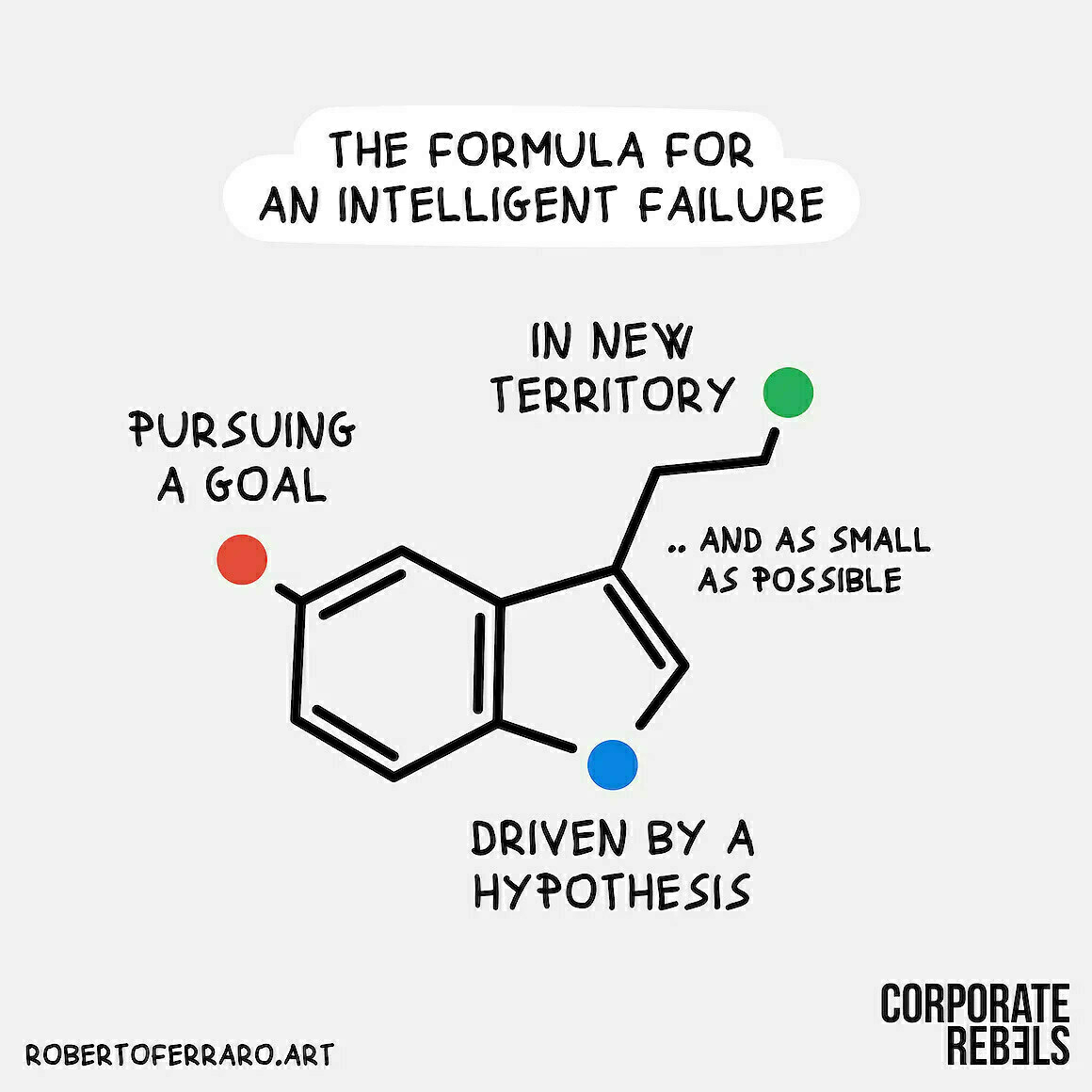
We are all taught these days that failure is an essential part of learning, and that we need to fail if we want to develop as people. But it’s one thing to hear that, and another thing to be able to do it. Because we have all grown up in education systems where failure is bad, and worked for organisations where failure gets punished in a whole range of less-then-explicit ways.Source: Energy | Failing - by Andrew CurrySo it is interesting to see Amy Edmondsen writing about “intelligent failure” on the Corporate Rebels blog. She has just published a book on this theme.
[…]
The first part of this is to know that there are different kinds of failures. The set of things that are included in “intelligent failures” does not include failures that happened because you couldn’t be bothered. But it does include failures that happen as a result of complexity or bad luck.
So by working hard to prevent avoidable failures, they are able to embrace the other ones.
Edmondsen has developed a model from her research about intelligent failure which the Corporate Rebels turned into one of their distinctive graphics. Here are her four criteria:
It (1) takes place in new territory (2) in pursuit of a goal, (3) driven by a hypothesis, and (4) is as small as possible. Because they bring valuable new information that could not have gained in any other way, intelligent failures are praiseworthy indeed.
Falling asleep on the couch watching films
I can count on the fingers of no hands the number of times I’ve fallen asleep watching a film at home. I have, however, fallen asleep watching one at the cinema.
This is perhaps for three reasons. First, I usually wear contact lenses, but not when I’m in the cinema. Second, because my wife and I can’t seem to watch a film at home without pausing it half a dozen times. Third, because I’d rather read than watch a film.
So, yeah, this article isn’t for me. But I’m sharing it because I can’t really get into the mindset of someone for whom this is a problem.
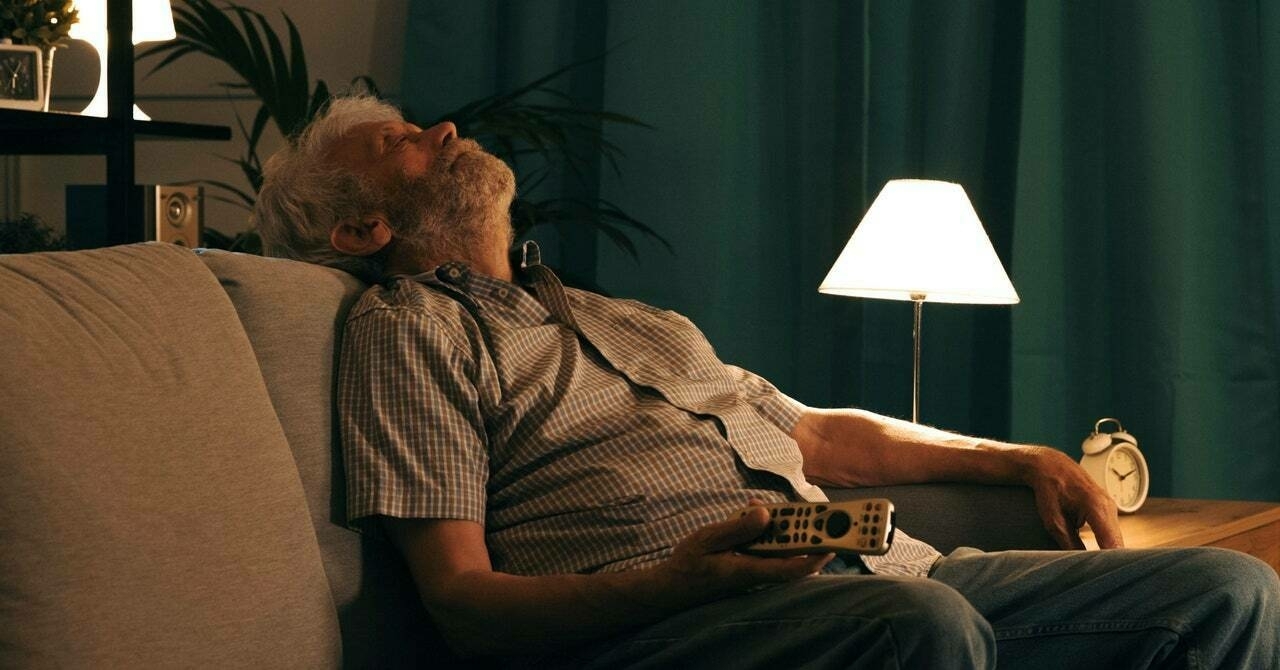
I’ve watched the first half of a billion movies. This is how a typical movie night goes for me: After eating too many fries from Rocketbird and washing it down with a couple of beers, I’m swaddled in a plush blanket, horizontal on the couch, and zonked out long before Michelle Yeoh reaches the hotdog finger scene in Everything Everywhere All at Once.Source: How to Stop Falling Asleep on the Couch During Movies | WIREDMaybe your schedule is hectic, but you still want to catch every twist and turn in the Glass Onion movie. Or perhaps your significant other’s date-night selection seems like a snoozefest, and you’re attempting to roll credits on Morbius. Whatever your reason is to stay awake, keep the following advice in mind the next time you’re streaming something at home.
Yuval Noah Harari on the post-truth revolutionary right
Friend and collaborator Bryan Mathers recommended this episode of The Rest is Politics: Leading to me. While I’m a regular listener to the main podcast, which features only Alastair Campbell and Rory Stewart, I hadn’t previously bothered with the ones where they interview others.
This one with Yuval Noah Harari is great. It’s the second part of a two-part interview. In the first, recorded in August, Harari talks about the situation in Israel. In this second one, he zooms out a bit to talk about politics more generally, AI, and society.
The thing that struck me, about 5-10 minutes in, was his point about the left and right of politics not making sense any more. That’s something that others have said before. But his analysis was fascinating: the right has largely abandoned the role of being guardians of tradition to weaponise ‘truth’, which has led to the left being in the awkward position of custodian. That’s why everything feels topsy-turvy.
(also, I’m really pleased to have discovered pod.link to share podcast episodes in a non-platform-specific way as easily as song.link)
(also also, I found out about a podcast search engine call Listen Notes recently!)
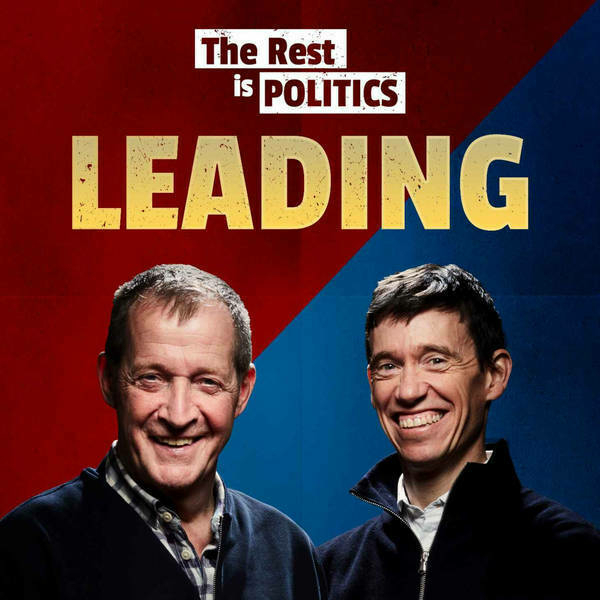
Rory Stewart and Alastair Campbell, hosts of Britain's biggest podcast (The Rest Is Politics), have joined forces once again for their new interview podcast, ‘Leading’.Every Monday, Rory and Alastair interrogate, converse with, and interview some of the world's biggest names - from both inside and outside of politics - about life, leadership, or leading the way in their chosen field.Whether they're sports stars, thought-leaders, presidents or internationally-recognised religious figures, Alastair and Rory lift the lid on the motivation, philosophy and secrets behind their career.Tune in to 'Leading' now to hear essential conversation from some of the world's most enthralling individuals.Source: The Rest is Politics: Leading
Microcast #99 — EVs
Reflections on taking delivery of an electric vehicle (EV), including charging, business lease, and other rambling thoughts.
Show notes
Image: taken by me on my first run-out to Druridge Bay
Songs are not meme stocks
Remember NFTs? This article in The Guardian will help remind you of the heady days of early 2022 when digital images of monkeys were apparently extremely valuable. That article ends with a question: “what will the next NFT be? When will it drop? How much money will normal people end up spending on it?”
Here’s one answer: owning a slice of your favourite song. Or perhaps a popular song. Or an up-and-coming song. It’s essentially applying capitalism at the very smallest level possible, and treating cultural artifacts as commodities.
The article below in WIRED discusses a platform which offers this as a service. It’s a terrible idea on many levels, not least because, as we’ve seen recently, AI-generated music is tearing fandoms apart. I’ll sit this one out, thanks.

Imagine a retirement portfolio stocked with Rihanna hits, or a college fund fueled by Taylor Swift’s 1989. In a post-GameStop, post-NFT-mania world, it sounds plausible enough. Wholesome, even.Source: The Next Meme Stock? Owning a Slice of Your Favorite Song | WIREDA new music royalties marketplace, Jkbx (pronounced “jukebox”), launched this month and plans to officially open for trading later this year. It has filed an application with the US Securities and Exchange Commission and is waiting for notice that the SEC has qualified its offerings. As long as that goes according to plan, Jkbx—god, why no vowels?—will allow fans to buy “royalty shares,” or fractionalized portions of royalties, fees, and other income associated with a particular song. Prices are within reach of regular people. One share of composition royalties for Beyoncé’s “Halo,” for example, is $28.61. You could also buy a slice of the song’s sound recording royalties for the same price.
[…]
Jkbx is debuting with some big-name slices, and is led by a guy with a good track record. “They are very sophisticated,” Round Hill Music founder and CEO Josh Gruss says. “The real deal.” Others agree. “We think they are going to be successful,” Hipgnosis Songs CEO and founder Merck Mercuriadis says.
Still, plenty of industry analysts and insiders view Jkbx, and the larger world of royalty trading, warily. “I think there are going to be very modest levels of return,” says Serona Elton, a music industry professor at the University of Miami.
“There is skepticism about how good of an alternative investment strategy something like this is,” musician and data analyst Chris Dalla Riva says.
“I don’t understand why people keep trying to spin this idea up,” adds producer and music tech researcher Yung Spielburg. “I just don’t get it.”
Adversarial interoperability to return to a world of 'fast companies'
Cory Doctorow is one of my favourite people on the entire planet. I’ve heard him speak in person and online on numerous occasions. I met him a couple of times while at Mozilla, and he’s even recommended swimming pools in Toronto to me when I visited. (He’s a daily swimmer due to chronic back pain.)
His new book, which I’m saving to read for my next holiday, is The Internet Con: How to Seize the Means of Computation. In this interview as part of promoting the book, he talks about how we’ve ended up in a world without real competition in the technology marketplace. Essential reading, as ever.
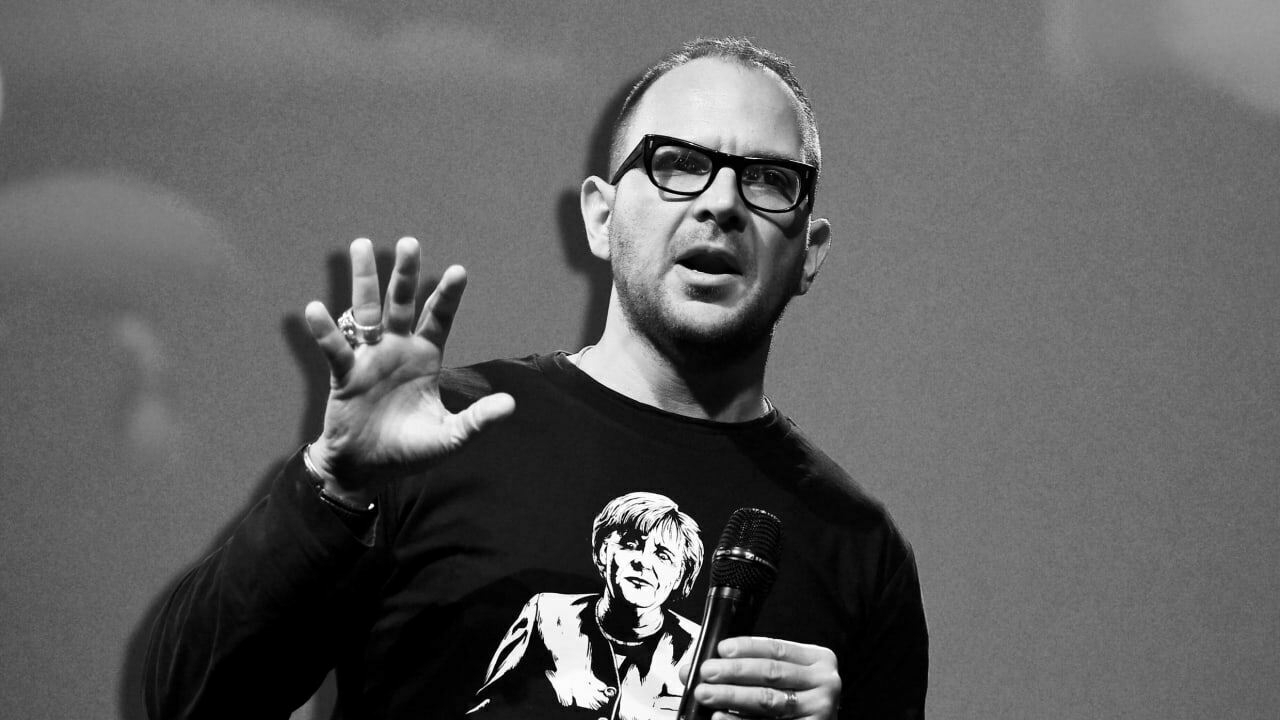
There used to be a time when the tech sector could be described as a bunch of “fast companies,” right? They would use the interoperability that’s latent in all digital technology and they would specifically target whatever pain points the incumbent had introduced. If incumbents were making money by showing you ads, they made an ad blocker. If incumbents were making money by charging gigantic margins on hard drives, they made cheaper hard drives.Source: Cory Doctorow: Silicon Valley is now a world of ‘lumbering behemoths’ | Fast CompanyOver time, we went from an internet where tech companies more or less had their users’ backs, to an internet where tech companies are colluding to take as big a bite as possible out of those users. We do not have fast companies anymore; we have lumbering behemoths. If you’ve started a fast company, it’s probably just a fake startup that you’re hoping to get acqui-hired by one of the big giants, which is something that used to be illegal.
As these companies grew more concentrated, they were able to collude and convince courts and regulators and lawmakers that it was time to get rid of the kind of interoperability, the reverse engineering that had been a feature of technology since the very beginning, and move into a new era in which no one was allowed to do anything to a tech platform that their shareholders wouldn’t appreciate. And that the government should step in to use the state’s courts to punish anyone who disagrees. That’s how we got to the world that we’re in today.
Sycamore Stump
There is, or rather was, a tree that symbolised the North East of England. Standing at a dip in the ground along Hadrian’s Wall called ‘Sycamore Gap’, it’s a tree I’ve visited many times with friends and family. Last year, when I walked the wall in 72 hours, it was a familiar touchstone.
Now the iconic 200 year-old tree, which featured in the film Robin Hood: Prince of Thieves, is gone. Felled by a 16 year-old in an act of wanton vandalism. On a World Heritage Site. Some people just want to watch the world burn.
It didn’t take long for someone to rename the place on Google Maps where the tree used to stand to ‘Sycamore Stump’. Hopefully they will build some kind of memorial to it. I do think it’s difficult for someone not from the region to understand just how important things like this are to one’s identity.
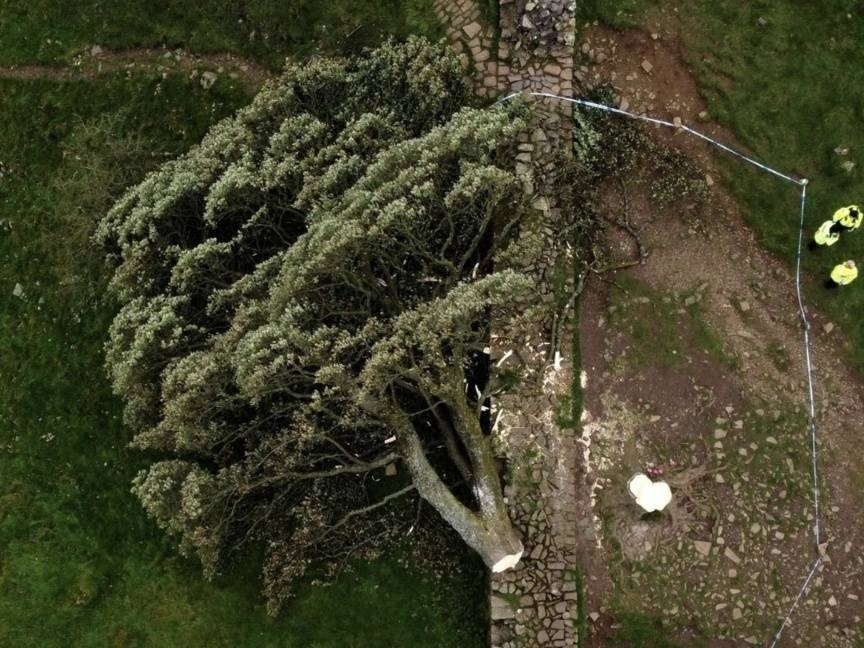
A 16-year-old boy has been arrested in northern England in connection with what authorities described as the “deliberate” felling of a famous tree that had stood for nearly 200 years next to the Roman landmark Hadrian’s Wall.Source: ‘Incredibly sad day’: Teen arrested in England after felling ancient tree | Al Jazeera[…]
Photographs from the scene on Thursday showed the tree was cut down near the base of its trunk, with the rest of it lying on its side.
Northumbria Police said the teen was arrested on suspicion of causing criminal damage. He was in police custody and assisting officers with their inquiries.
[…]
“This is an incredibly sad day,” police Superintendent Kevin Waring said. “The tree was iconic to the North East and enjoyed by so many who live in or who have visited this region.”
Image: Oli Scarff / Agence France-Presse (taken from NYT article)
Please consider stopping eating animals
I don’t know how many people reading this are vegans or vegetarians. I was a pescetarian from October 2017 to January 2020 and then, since then, stopped eating fish too.
The reason I stopped eating meat was because of an article about the number of chickens that are killed each day. You can say that the actual death is painless, but they’re reared to have terrible lives, and many of them are electrocuted to death because it’s the cheapest method.
I’m sorry if this is shocking to you, but it’s even more shocking to the chickens. Eating meat is bad for your long-term health, bad for the environment, and ethically dubious. I’m not particularly interested if you agree right now, but I’d like you consider whether you’re on the right side of history.
My plan is to eventually turn vegan. I’ve replaced most of my milk consumption, including in tea and coffee, with oat milk.
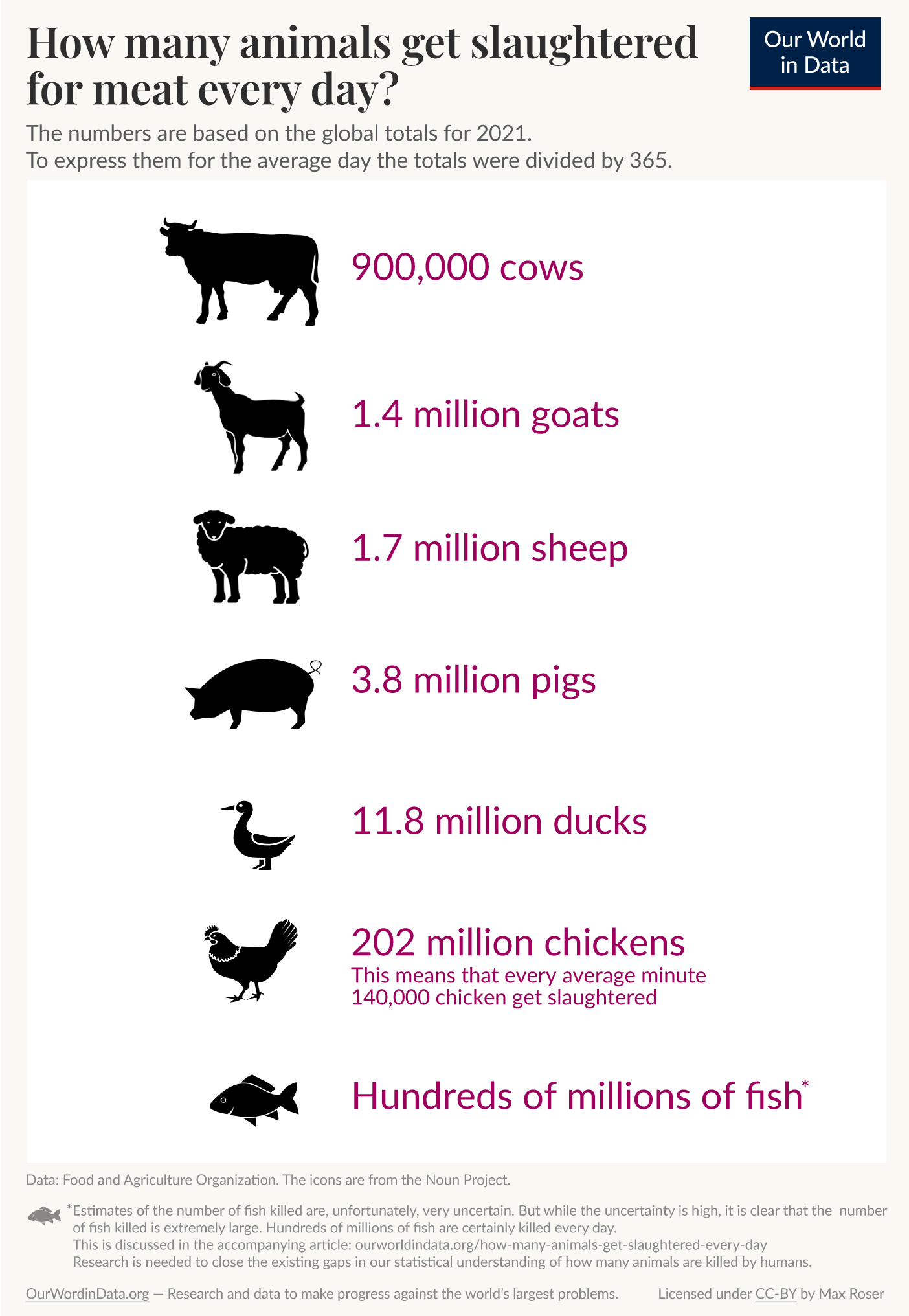
The scale of humanity’s meat consumption is enormous. 360 million tonnes of meat every year.Source: How many animals get slaughtered every day? | Our World in DataThis number is so large that I find it impossible to comprehend. What helps me to make these numbers more relatable is to turn them from the weight of meat to the number of animals and from the yearly total to the daily number. This is what I have done in the graphic below. It shows how many animals are slaughtered on any average day.
About 900,000 cows are slaughtered every day. If every cow was 2 meters long, and they all walked right behind each other, this line of cows would stretch for 1800 kilometers. This represents the number of cows slaughtered
For chickens, the daily count is extremely large – 202 million chickens every day. To comprehend the scale, it is better to bring it down to the average minute: 140,000 chickens are slaughtered every minute.
The number of fish killed every day is very uncertain. I discuss this in some detail at the end of this article. But while the uncertainties are large, it is clear that the number of fish killed is large: certainly, hundreds of millions of fish are killed every day.If you believe that the slaughter of animals causes them to suffer and attribute even a small measure of ethical significance to their suffering, then the moral scale of this reality is immense.
'Personalisation' is something that humans do
Audrey Watters, formerly the ‘Cassandra’ of edtech, is now writing about health, nutrition, and fitness technologies at Second Breakfast. It’s great, I’m a paid subscriber.
In this article, she looks at the overlap between her former and current fields, comparing and contrasting coaches and educators with algorithms. While I don’t share her loathing of ChatGPT, as an educator and a parent I’d definitely agree that motivation and attention is something to which a human is (currently) best suited.
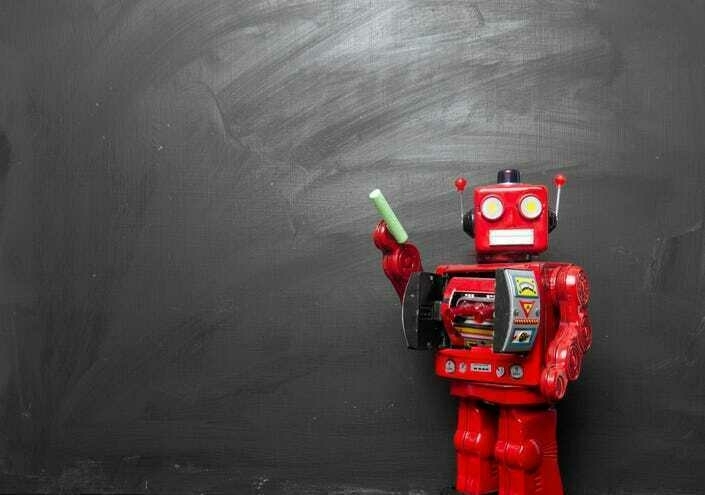
How well does a teacher or trainer or coach know how you feel, how well you performed, or what you should do or learn next? How well does an app know how you feel, how well you performed, or what you should do next? Digital apps insist that, thanks to the data they collect, they can make better, more precise recommendations than humans ever can — dismissing what humans do as “one size fits all.” Yet it's impossible to scrutinize their algorithmic decision-making. Ideally, at least, you can always ask your coach, "Why the hell am I doing bulgarian split squats?! These suck." And she will tell you precisely why. (Love you, Coach KB.)Source: Teacher/Coach as Algorithm | Second BreakfastAnd then (ideally) she’ll say, “If you don’t want to do them, you don’t have to.” And (ideally), she’ll ask you what’s going on. Maybe you feel like shit that day. Maybe you don’t have time. Maybe they hurt your hamstrings. Maybe you’d like to hear some options — other exercises you can do instead. Maybe you’d like to know why she prescribed this exercise in the first place — “it’s a unilateral exercises, and as a runner,” she says, “we want to work on single-leg strength, with a focus on your glute medius and adductors because I’ve noticed, by watching your barbell squats, that those areas are your weak spots.” This is how things get “personalized” — not by some massive data extraction and analysis, but by humans asking each other questions and then tailoring our responses and recommendations accordingly. Teachers and coaches do this every. goddamn. day. Sure, there’s a training template or a textbook that one is supposed to follow; but good teachers and coaches check in, and they switch things up when they’re not really working.
[…]
If we privilege these algorithms, we’re not only adopting their lousy recommendations; we’re undermining the expertise of professionals in the field. And we’re not only undermining the expertise of professionals in the field, we’re undermining our own ability to think and learn and understand our own bodies. We’re undermining our own expertise about ourselves. (ChatGPT is such a bad bad bad idea.)
Migraines and 'ability'
Granted it’s been over a decade, but when I worked at a university I had to be on the ‘disabled’ register due to my migraines. That meant my line manager could make accommodations such as being sat next to a window so the fluorescent lights didn’t trigger me.
Almost everyone I know has some kind of medical condition which affects their work to a greater or lesser extent. These are the things that we used to hide, until we realised (perhaps for the first time during the pandemic) that we’re all just temporarily abled.
This letter in The Guardian is a response to an article about a minister setpping down due to chronic migraines. I don’t get 15 or more a month, as she does, but I probably average 3-4 and, because they add up, it’s imperative that I have flexible working conditions. But then, shouldn’t we all?
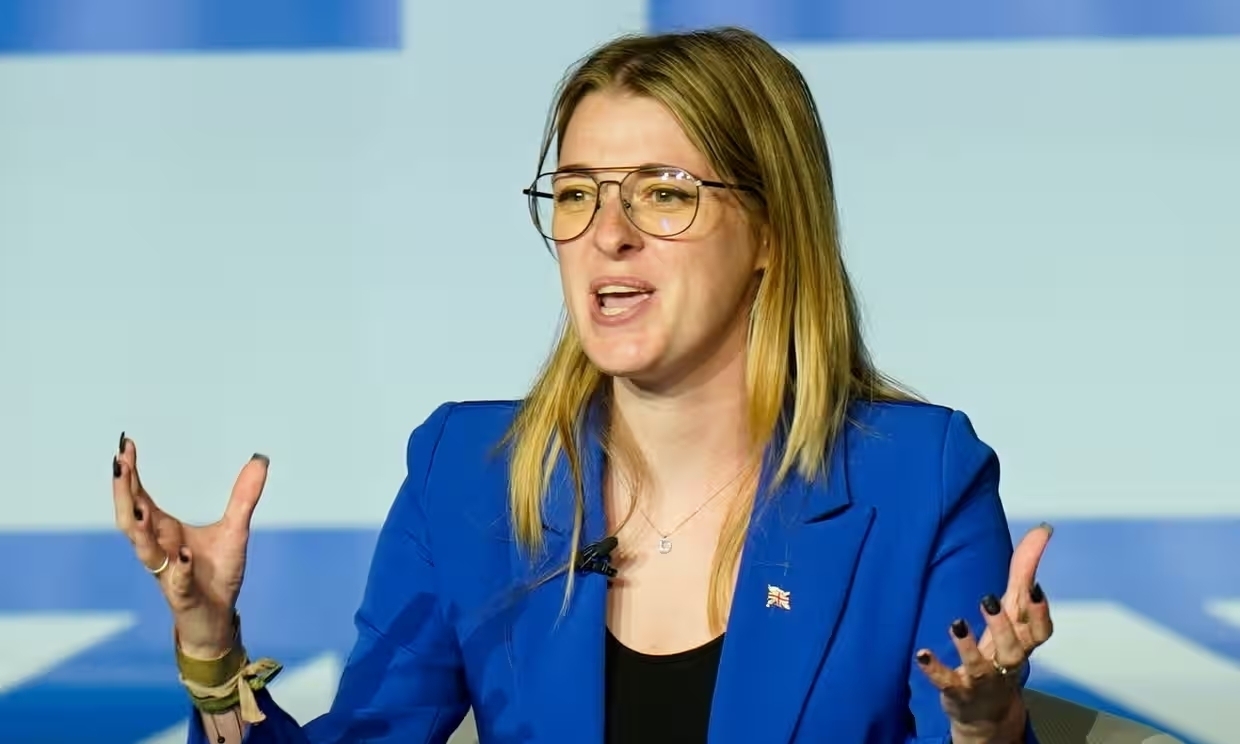
Dehenna Davison has resigned as a minister, citing chronic migraines (Report, 18 September). Migraines are a common and debilitating condition affecting many people; chronic migraine is defined as an ongoing experience of 15 or more migraine days a month. So it is not difficult to imagine how hard it has been for Ms Davison to give the energy she wants to her role.Source: People living with migraines need better support from employers | The GuardianBut while it is valuable that chronic migraines have been given some media attention, it is also troubling that the message is, unfortunately, that those with such conditions do not have equal value and should quit if they can’t manage the job – a message that many people living with migraines and other long-term conditions and disabilities will be familiar with, whatever their role or employer.
Managing work, life and migraines takes more than the “patience at times” that Davison thanks her colleagues for. It needs recognition, respect and a commitment from employers to prioritise the health of workers and support them to work with the condition, not drop back because of it.
Anna Martin Oxford
No career progression on a dead planet
There’s a film starring Matt Damon called Elysium from 2013 in which the wealthy live on a man-made space station in luxury, while the rest of the population live on a ruined Earth. With the latest announcement about a new huge oilfield being opened in the North Sea, the obscene desire for global elites to put profit before planet is clear for all to see.
As we hurtle towards this scenario, many have realised that there is no longer any link between meaningful work, a decent salary, and a fulfilling life.

James, a 31-year-old in Glasgow, had always worked hard, from striving for a first at university to working until 8pm or 9pm at the office in the civil service in the hopes of getting noticed.Source: ‘It felt futile’: young Britons swap career-driven lives for family and fun | The GuardianBut during lockdown in 2020, James had an epiphany about what he valued in life when reading the book Bullshit Jobs by the anthropologist David Graeber. “He talks a lot about how jobs that provide social utility are generally pay-poor while the inverse are paid more,” James says.
James felt he was working doggedly – but not necessarily either generating public good or building a stable financial life. “It felt futile … You can work really hard and you’re still not going to get ahead,” he says.
“Salaries and housing costs are so mismatched at this point that you would really need to jump ahead in your career to be able to buy in parts of the country. Not that [owning property] is the be-all and end-all, but it’s kind of a foundation to having financial stability.”
He now focuses on his life, putting his phone on aeroplane mode while doing activities such as hiking, reading and watching films. “I still value work, I’m very committed to my position. But I’ve just realised that this myth a lot of millennials were told – graft, graft, graft and you’ll always get what you want – isn’t necessarily true,” James says. “It’s a reprioritisation.”
Social mobility in the UK is at its worst in more than 50 years, a recent study from the Institute for Fiscal Studies found, with children from poor households finding it harder than 40 years ago to move into higher income brackets. The IFS said gifts and inheritances from older generations were becoming more important to household incomes.
AI generated images with subliminal messages
You’ve probably seen some of these already. Someone discovered that if you use the generator for QR codes but feed it something different, it can create words from images.
There are lots more examples at knowyourmeme and you can try creating your own using KREA.
ControlNet uses the AI image-generating tool Stable Diffusion, and one of its initial uses was generating fancy QR codes using the code as an input image. That idea was then taken further, with some users developing a workflow that lets them specify any image or text as a black-and-white mask that implants itself into the generated image—kind of like an automated, generative version of the masking tool in Photoshop.Source: AI-Generated ‘Subliminal Messages’ Are Going Viral. Here’s What’s Really Going On | VICE“What happened there was that this user discovered that if they used the QR Code ControlNet but instead of feeding it a QR code, they fed it some other black-and-white patterns, they could create nice optical illusions,” said Passos. “You can now send a conditioning image and the model blends in a pattern that satisfies that while still making a coherent image at the same time.”
On preparing, issuing, and claiming badges
I attended a Navigatr webinar at lunchtime today where they shared this graphic which underscores the importance of encouraging badge earners to share their achievements on social networks.
What I appreciated about the webinar was the way in which the team explained the importance of preparing for and then following up the issue of the badge to ensure that it’s claimed.
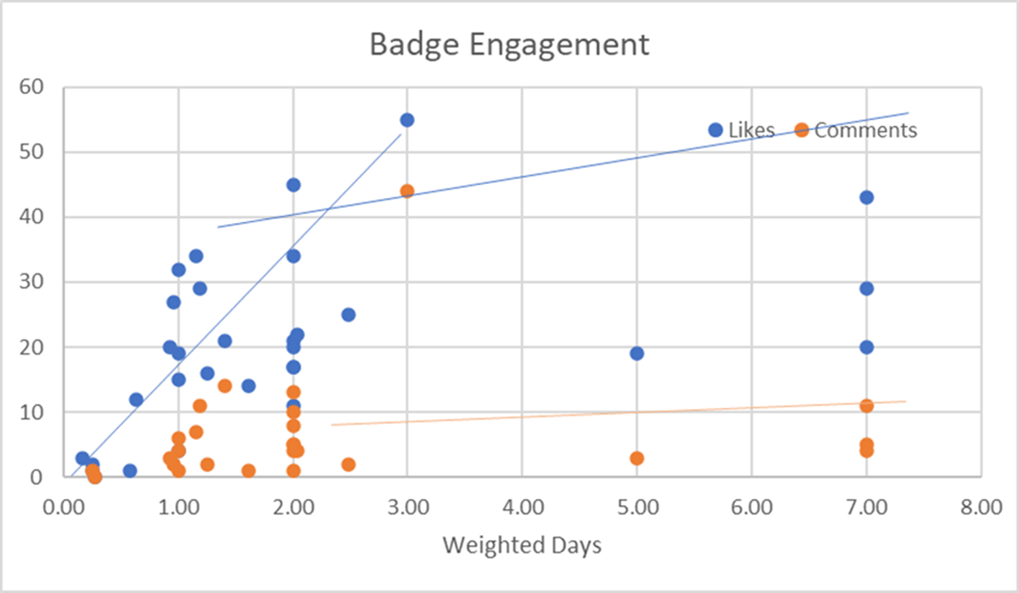
Our study of several recently shared digital badges on social media as shown below showed that on average, a posted badge received 500-1k impressions and 25 interactions, of which, 4-5 were actual comments. We found that the number of connections and days since posted lead to increases in the number of interactions. Engagement seemed to plateau around 4-5 days and those with several hundred to 500+ connections were most likely to receive numerous interactions. Location – whether the US or abroad did not seem to matter, suggesting the power of social media is universal when it comes to engagement.Source: Improve Brand Engagement with Digital Badges | BadgeCert
Telling stories using cartoons
Liza Donnelly is a cartoonist for the New Yorker. In this article, which is an output from some preparatory work for a talk she’s preparing, she talks about how the best cartoons work.
I’ve had the privilege of working with Bryan Mathers over the last decade and it really is a fascinating process. In fact, he’s just delivered a bunch of artwork for the work we’re doing around Open Recognition. Check it out here!
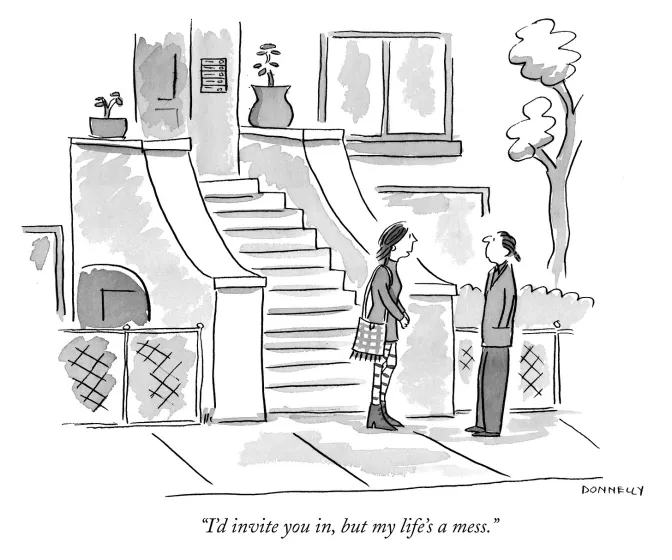
Story is everywhere. In single panel cartoons, they have to be kept in one image. It’s tricky and challenging and I love it. I like to say that a single panel cartoon is like a mini stage. The artist is a set designer, choreographer, script writer, costume designer, casting director. Each element in the drawing needs to be necessary for the idea, no more, no less; there are exceptions of course. Some creators are known for a style that is overly detailed and complicated, and that is part of the voice of the artist and contributes to the story. The image is a moment in time, and you have to feel that there is time before the moment you see, and a continuation after that moment. And the characters are well “described” in the execution.Source: Storytelling In Drawing | Seeing Things[…]
Bottom line: story in the best New Yorker cartoons tell us a story about the characters that are in the drawing, and about ourselves. This is why we love them so much—they are fun, entertaining and are about us.
AI = surveillance
Social networks are surveillance systems. Loyalty cards are surveillance systems. AI language models are surveillance systems.
We live in a panopticon.
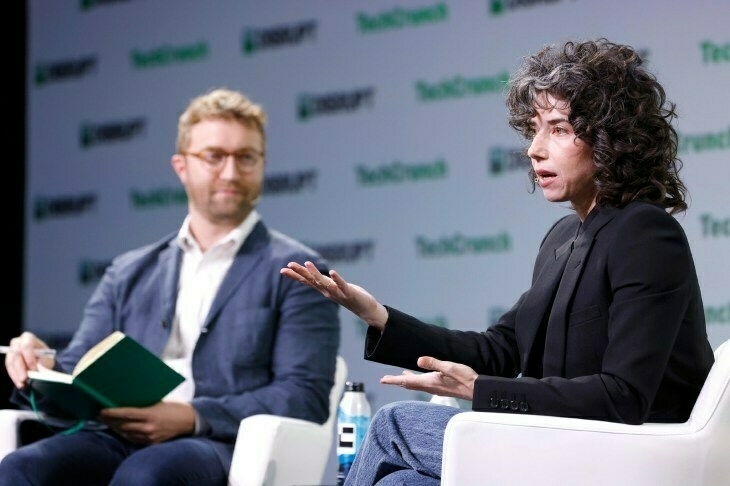
Why is it that so many companies that rely on monetizing the data of their users seem to be extremely hot on AI? If you ask Signal president Meredith Whittaker (and I did), she’ll tell you it’s simply because “AI is a surveillance technology.”Source: Signal’s Meredith Whittaker: AI is fundamentally ‘a surveillance technology’ | TechCrunchOnstage at TechCrunch Disrupt 2023, Whittaker explained her perspective that AI is largely inseparable from the big data and targeting industry perpetuated by the likes of Google and Meta, as well as less consumer-focused but equally prominent enterprise and defense companies. (Her remarks lightly edited for clarity.)
“It requires the surveillance business model; it’s an exacerbation of what we’ve seen since the late ’90s and the development of surveillance advertising. AI is a way, I think, to entrench and expand the surveillance business model,” she said. “The Venn diagram is a circle.”
“And the use of AI is also surveillant, right?” she continued. “You know, you walk past a facial recognition camera that’s instrumented with pseudo-scientific emotion recognition, and it produces data about you, right or wrong, that says ‘you are happy, you are sad, you have a bad character, you’re a liar, whatever.’ These are ultimately surveillance systems that are being marketed to those who have power over us generally: our employers, governments, border control, etc., to make determinations and predictions that will shape our access to resources and opportunities.”
Screens, addiction, and parenting
I spent my lunchtime packaging up my beloved PlayStation 5. I’m going to send it to my brother-in-law and his family until my son heads off to university. This directly impacts me and my extra-curricular activities, but I’m at my wits end.
He can’t control his use of it, sadly. Combined with his use of a smartphone, I feel like I’ve failed as a parent despite all of the things I’ve tried. I wrote my doctoral thesis on digital literacies, for goodness sake.
Ben Werdmuller’s at the other end of the spectrum with his son. I wish him the best of luck.
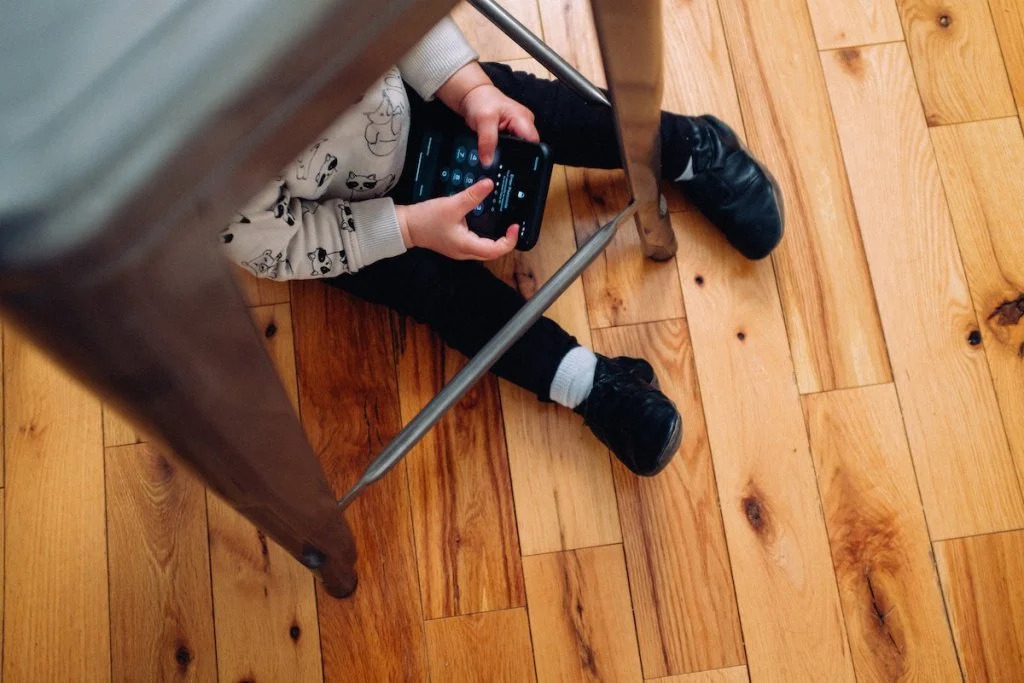
We walk our son to daycare via the local elementary school. This morning, as we wheeled his empty stroller back past the building, a school bus pulled up outside and a stream of eight-year-olds came tumbling out in front of us. As we stood there and watched them walk one by one into the building, I saw iPhone after iPhone after iPhone clutched in chubby little hands. Instagram; YouTube; texting.Source: Parenting in the age of the internet | Ben WerdmullerIt’s obvious that he’ll get into computers early: he’s the son of someone who learned to write code at the same time as writing English and a cognitive scientist who does research for a big FAANG company. Give him half a chance and he’ll already grab someone’s phone or laptop and find modes none of us knew existed — and he’s barely a year old. The only question is how he’ll get into computers.
[…]
He’s entering a very different cultural landscape where computers occupy a very different space. Those early 8-bit machines were, by necessity, all about creation: you often had to type in a BASIC script before you could use any software at all. In contrast, today’s devices are optimized to keep you consuming, and to capture your engagement at all costs. Those iPhones those kids were holding are designed to be addiction machines.
